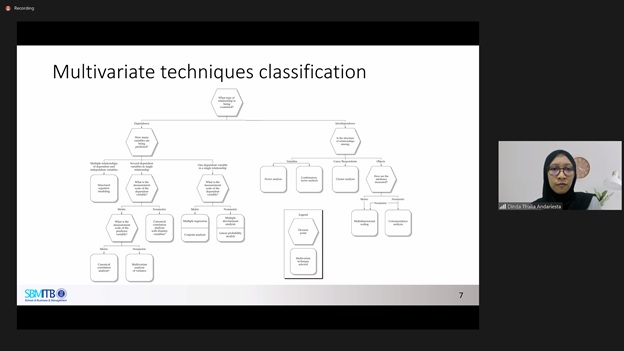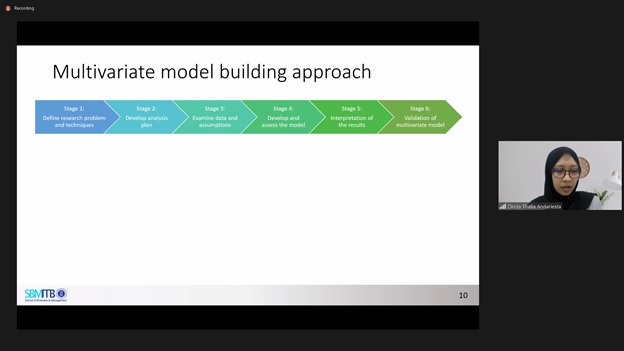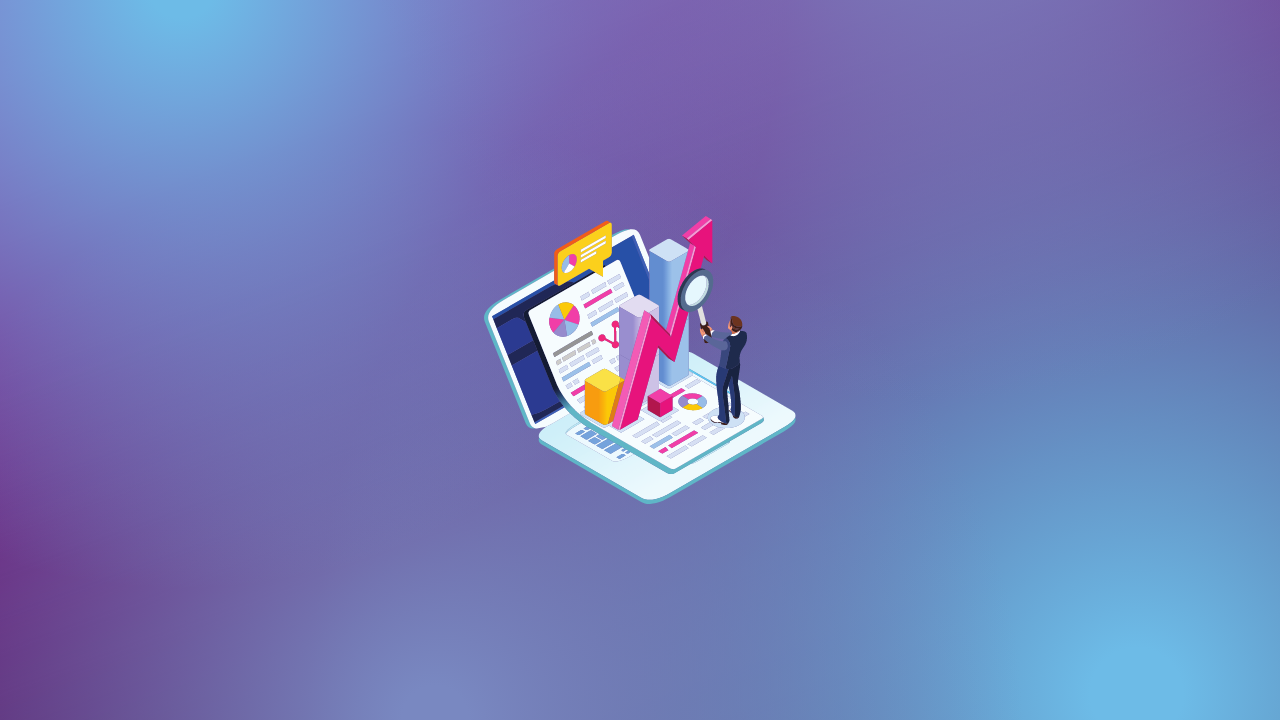Research and development are inextricably linked in today’s business. Multivariate data analysis, analyzing various data sets simultaneously for company development, is popular in research. Dinda Thalia Andariesta was invited as a guest lecturer for virtual lectures by SBM ITB to better understand the analysis Friday (22/4/2022).
 Dinda, a part-time researcher at the School of Business and Management, stated that linking one effect to multiple causes in business research is preferable because it allows us to comprehend a phenomenon as a whole. Processing complex data into knowledge is a trend today, especially in the era of complex data, when more than one or two variables are involved.
Dinda, a part-time researcher at the School of Business and Management, stated that linking one effect to multiple causes in business research is preferable because it allows us to comprehend a phenomenon as a whole. Processing complex data into knowledge is a trend today, especially in the era of complex data, when more than one or two variables are involved.
“We use statistical techniques to simultaneously analyze and measure the individuals or objects under investigation. The result is an equation that can represent concerns or findings through complex combinations of variables,” explained the former Master Teacher at Ruangguru.
Multivariate analysis has two types of techniques: dependent and interdependent. Researchers must determine the relationship between the main and supporting variables in the dependent technique analysis. Multiple regression analysis, multiple discriminant analysis, logistic regression analysis, conjoint analysis, multivariate analysis of variance, and structural equation modeling are all options. Meanwhile, interdependence determines the relationship structure between several variables or objects with unclear relationships. Interdependence employs several techniques: factor analysis, cluster analysis, multidimensional scaling, and correspondence analysis.
 The following steps are used in developing multivariate models:
The following steps are used in developing multivariate models:
- Defining problems, questions, objectives, techniques, and other research specifications.
- Creating an analysis plan and collecting sample data using the appropriate tools.
- Acknowledging data and assumptions that arise and analyzing inappropriate data
- Creating a suitable multivariate model to identify and generate scientifically acceptable data used in applied science.
- Interpreting the results
- Validating the results.
Extensive Knowledge
Dinda, the former Supply Chain Analyst at PT Acme Indonesia and Failure Analysis Engineer at Infineon Technologies closed her presentation by sharing her experience.
“As researchers, we cannot guarantee or be certain of anything. There isn’t always a clear polarization that we can quantify. As researchers, we can only use instruments to measure and predict future phenomena,” said the Assistant Coordinator at the Faculty of Mathematics and Natural Sciences ITB and Laboratory Assistant at the Department of Physics ITB.
The research goal is to help the company. The main advantage of research results is providing alternatives to the stakeholder to choose from based on the needs and interests of the company. It can also provide products appropriate for the intended consumers, as well as mapping, measuring, testing hypotheses, seeking explanations, making predictions, and other activities related to the specified objectives. In short, research fills gaps in the literature, or practical implications, such as identifying uses and applications in related industries.




